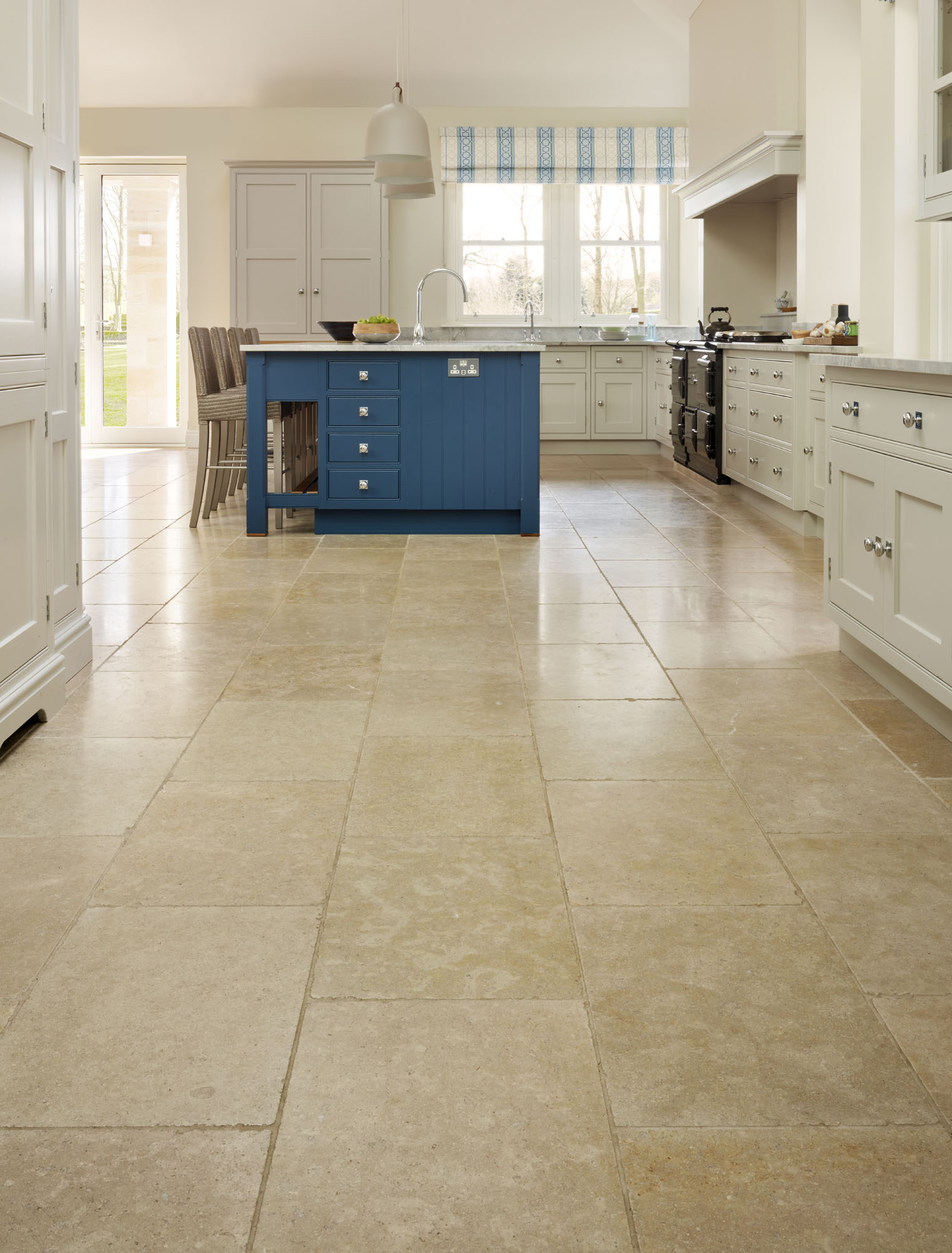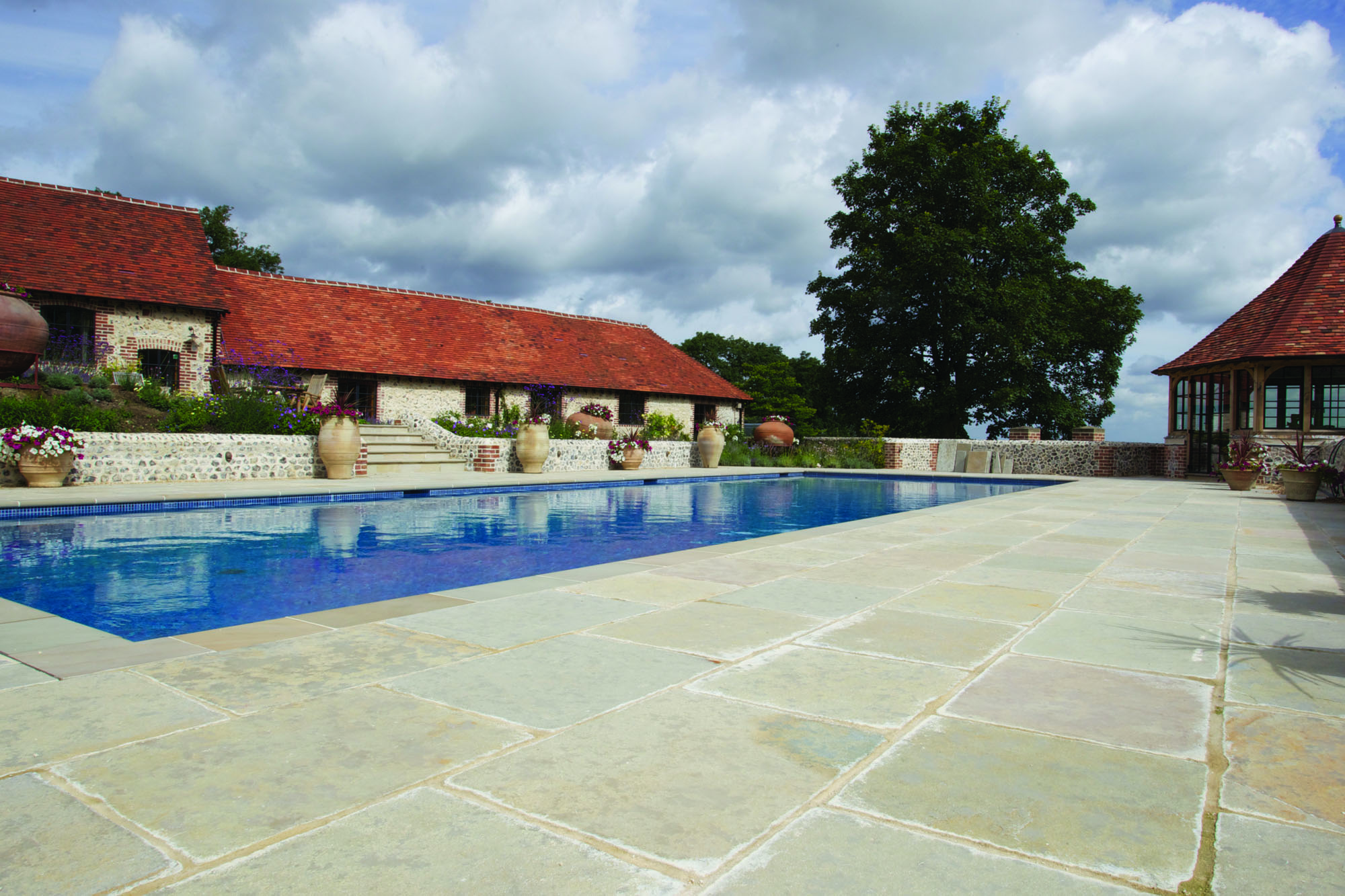There are several factors which it is important to consider. Firstly the stone floor has to be permanent. This means that it must be frost resistant. Many limestones and slates are frost resistant however many terracottas and marbles are not. Sadly it is common to see in public spaces examples where the wrong tile has been laid and sections are flaking of the top due to frost damage.
 Secondly the stone tile has to be durable. The key issue to consider is the base on which the stone will be laid. A concrete base is the most preferable to use outside as it provides a firm and consistent base which should be free from any settlement or movement. If you chose a concrete base it also means the stone tile you chose can be thinner as it will not need to withstand such movement and stress. If the base is sand and cement this simply means the tile you chose will have to be at least 3cm thick.
Secondly the stone tile has to be durable. The key issue to consider is the base on which the stone will be laid. A concrete base is the most preferable to use outside as it provides a firm and consistent base which should be free from any settlement or movement. If you chose a concrete base it also means the stone tile you chose can be thinner as it will not need to withstand such movement and stress. If the base is sand and cement this simply means the tile you chose will have to be at least 3cm thick.
Thirdly the stone tile has to be practical. This means installing a tile which has an aged or brushed finish as this provides a non slip surface. This means that your new external stone floor will not be a death trap as soon as someone walks on it immediately after it has rained!
Once you have considered the factors above it is then simply a choice of choosing the most appropriate material aesthetically to suit your property. A more traditional property is more likely to suit a slate tile or a rustic flagstone such as Aged Chalgrave. A more contemporary property is more likely to suit a more lightly aged stone such as Aged Jarash or Aged Bernac.

